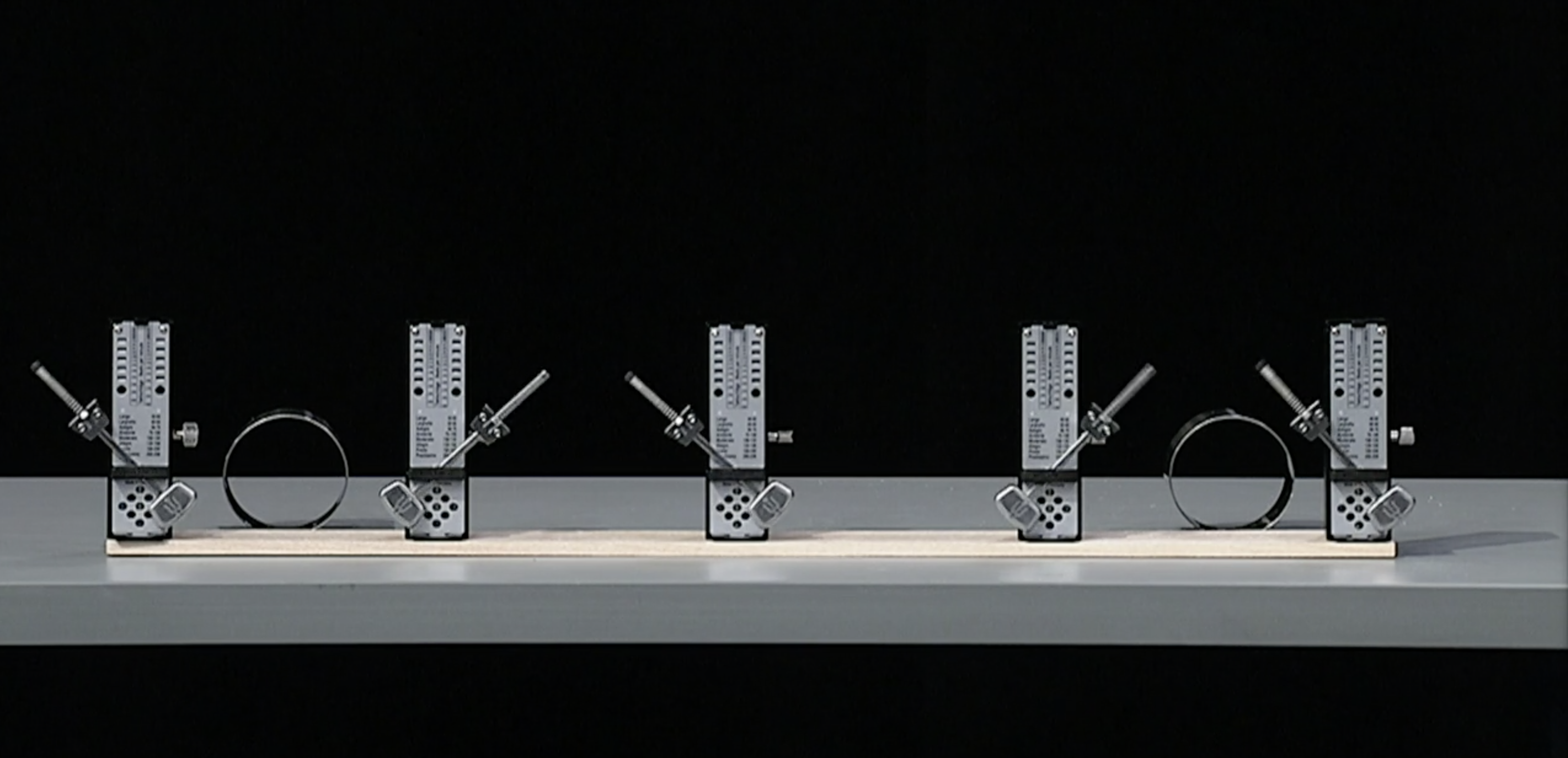
How to sync the brains of buying committees and make the sale
Take several mechanical metronomes and set them to tick at different speeds, so that you create a chaos of random sound. Tick tick tock ticktick tick tickticktick tocktock tick. This is what buying committees can feel like. A chaos of random ticking in different directions at different speeds, all of it coming to nothing.
In complex b2b sales, there is rarely a single decision maker. And the term “buying committee” itself is misleading because it implies that there is some consistent structure to the way companies make major purchasing decisions.
The reality is that there are almost always multiple stakeholders, all of them with different levels of influence on the buying decision, all of them with different attitudes toward the purchase, and all of them placing different levels of priority on it. Some of these stakeholders can be easier to find than others, and some of them may be “hidden” from view until you hit a snag and the sale stalls.
Getting all of these disparate buyers to “tick” to the same tune–the one that leads to making the purchase–is the complex b2b seller’s greatest challenge.
But what if it were as simple as setting them all in place and waiting for the alignment to occur on its own? Maybe it is, with the power of neural entrainment.
Physical entrainment, or: Metronomes on a board
In his 2016 TED Talk, neuroscientist Uri Hasson demonstrated the phenomenon of five metronomes automatically syncing themselves to each other when placed on a board.
(The metronomes demonstration starts at about 3:30.)
The metronomes are out of sync with each other at the beginning. Then Hasson sets them on a board and sets the board on two equal cylinders laid on their sides. Gradually, without any further action from Hasson, the metronomes begin to sync until they are all ticking in time with each other.
This is physical entrainment.
Hasson goes on to explain that there is a related phenomenon called “neural entrainment.”
Brainwaves in sync: Neural entrainment
Neural entrainment is a phenomenon that occurs when the brains of a group of people “sync up” so that their brainwaves literally move in time with each other.
This phenomenon has a physical component that can be measured with modern imaging technology. When properly applied, it also can be measured in sales results.
There is a reason we talk about people being “on the same wavelength.” When neural entrainment happens, our brains share a common wavelength.
This neural entrainment tends to also cause us to feel warmly toward one another, and in agreement with one another.
And when a salesperson can accomplish this feeling of warmth and common agreement among an entire team of buyers, the odds of making the sale increase significantly.
How to do it
The question isn’t whether neural entrainment works to get people moving toward a common goal. The question is, how do salespeople leverage this fact to make more sales?
“Natural born” sellers–the people who seem to always do well, no matter what sales environment you throw them into–do this intuitively. But it’s a skill that can be trained and enabled, and it’s a skill that starts with storytelling.
Storytelling has been shown through brain imaging to consistently and without further effort cause neural entrainment among listeners and the speaker.
To teach salespeople to leverage neural entrainment, start by identifying which stories your best salespeople are using, and when.
How are they bringing buying committees together? Are they starting out with individual contacts and later bringing the stakeholders together in one meeting? Or do they get everyone in one big room right from the outset?
Are they using the same stories with all stakeholders, or do they vary depending on the stakeholder’s role or attitude?
In a complex sale, it may be necessary to lead differing parties toward the same conclusion using different stories at first, and lead up to the main story that brings everyone into sync together.
In other cases, you may need to get them all ticking in the same direction right at the start, and that requires having them all in the same “room” at the same time.
Once you identify what your top sellers are doing and how they’re doing it, you can codify the best stories and serve them up at the right time in the sales process via today’s powerful sales enablement software.
We built Membrain for exactly this purpose. To help you systematize what your best sellers are doing, sync it up with your sales strategy, and execute these best practices–and best stories–across your organization.
Schedule a call with us today for a demonstration.

By George Brontén
George is the founder & CEO of Membrain, the Sales Enablement CRM that makes it easy to execute your sales strategy. A life-long entrepreneur with 20 years of experience in the software space and a passion for sales and marketing. With the life motto "Don't settle for mainstream", he is always looking for new ways to achieve improved business results using innovative software, skills, and processes. George is also the author of the book Stop Killing Deals and the host of the Stop Killing Deals webinar and podcast series.
Find out more about George Brontén on LinkedIn







